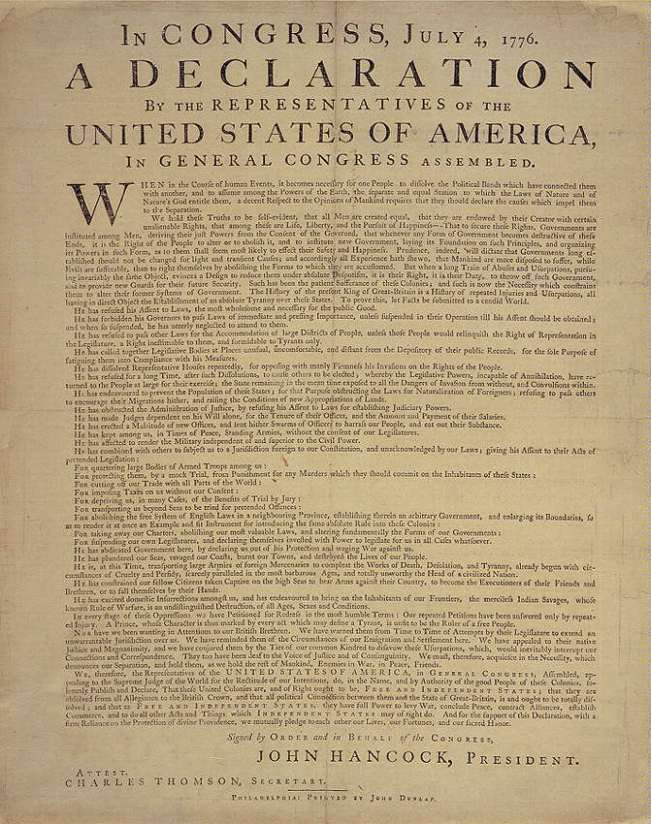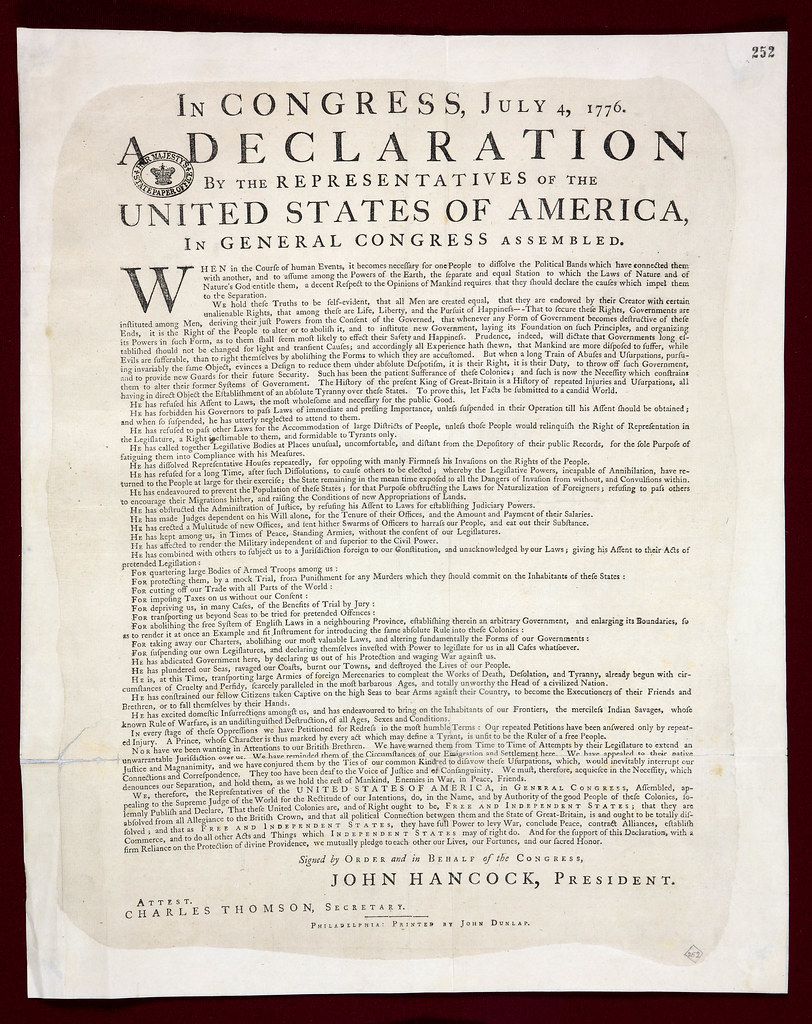

But if you look very closely-to the left of columns one through four and to the left of column six, you can see them.

The signature area, however, has vertical rule lines that served to align signatures in columns. Of course, lightly applied rule lines could have disappeared as a result of handling and abrasion. There is no evidence today in the text of either pin pricks or rule lines. Scribes often made pin pricks in the margins and drew rule lines across the sheet to guide the pen. Matlack’s lines of text are quite straight. Over time, iron gall inks age to a warm brown. Light in color when it was applied, the ink darkened as it oxidized to an intense purplish black. Iron gall ink, the kind typically used in Matlack’s day, included tannic acid (from oak galls), iron (from nails or iron scraps), a binder (often gum arabic), and sometimes a colorant. The Declaration as it appears today tells a compelling story of its history through physical clues on the parchment and ink. Why would edges have been trimmed? The possibilities include the desire to tidy an uneven edge, the need to remove a jagged bit of parchment that could catch on something and tear, or the wish to straighten an edge before mounting the document for exhibit.
DECLARATION OF INDEPENDENCE PICTURE FULL
Extremely grimy edges, resulting from years of handling the bare parchment, are original and reflect the full dimension of the document, while cleaner edges are evidence of trimming at some time in the past. It was slightly larger in Matlack’s day, as evidenced by variation in clean and dirty edges, especially along the top edge of the skin. Though not a perfect rectangle, the parchment is close at about 29½ by 24 inches.

Matlack penned a new title that is visually distinctive, with large letters and flourishes: “The unanimous Declaration of the thirteen united States of America.” Under this title, the lines of text take up almost the entire width of the parchment.
DECLARATION OF INDEPENDENCE PICTURE SKIN
He selected the best skin that was available, prepared his quill pens, and made sure he had a sufficient supply of ink. Matlack’s work included laying out the text on the parchment, determining the margins and space between lines, and calculating the space that would be needed at the bottom of the document for signatures.īetween July 19 and August 2 (when delegates began to sign the document), Matlack wrote out the text on a large sheet of parchment. Timothy Matlack, a clerk in the Pennsylvania State House, was the scribe charged with this task.

On July 19, 1776, the Continental Congress ordered the Declaration of Independence to be engrossed-or written out in a large legible hand. However, by piecing together the history and travels of the Declaration, and by examining key photographs, we can answer some questions about how the document got to its current state.Ĭreating the Physical Document After Declaring Independence There is little written evidence of what may have happened-or when-to alter the document. So what happened to this revered document? Constitution (1787) and Bill of Rights (1791), which are only slightly more recent, the differences are startling. Its legibility is greatly diminished, and the document today is much different in appearance from when it was penned in 1776. But the physical document itself has suffered greatly over the years. The Declaration continues to instill a sense of awe. They bend low over the glass to try to make out the faint script and identify the names of the signers. Sometimes you can see them in the Rotunda, patiently waiting for a good position in front of the encasement containing the Declaration. The Stone facsimile engraving of the text and signatures shows how the Declaration appeared in the early 1800s.Įvery year, more than a million visitors come to the National Archives Building in Washington, D.C., to see the Declaration of Independence.


 0 kommentar(er)
0 kommentar(er)
